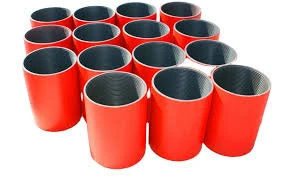- Afrikaans
- Albanian
- Amharic
- Arabic
- Armenian
- Azerbaijani
- Basque
- Belarusian
- Bengali
- Bosnian
- Bulgarian
- Catalan
- Cebuano
- Corsican
- Croatian
- Czech
- Danish
- Dutch
- English
- Esperanto
- Estonian
- Finnish
- French
- Frisian
- Galician
- Georgian
- German
- Greek
- Gujarati
- Haitian Creole
- hausa
- hawaiian
- Hebrew
- Hindi
- Miao
- Hungarian
- Icelandic
- igbo
- Indonesian
- irish
- Italian
- Japanese
- Javanese
- Kannada
- kazakh
- Khmer
- Rwandese
- Korean
- Kurdish
- Kyrgyz
- Lao
- Latin
- Latvian
- Lithuanian
- Luxembourgish
- Macedonian
- Malgashi
- Malay
- Malayalam
- Maltese
- Maori
- Marathi
- Mongolian
- Myanmar
- Nepali
- Norwegian
- Norwegian
- Occitan
- Pashto
- Persian
- Polish
- Portuguese
- Punjabi
- Romanian
- Russian
- Samoan
- Scottish Gaelic
- Serbian
- Sesotho
- Shona
- Sindhi
- Sinhala
- Slovak
- Slovenian
- Somali
- Spanish
- Sundanese
- Swahili
- Swedish
- Tagalog
- Tajik
- Tamil
- Tatar
- Telugu
- Thai
- Turkish
- Turkmen
- Ukrainian
- Urdu
- Uighur
- Uzbek
- Vietnamese
- Welsh
- Bantu
- Yiddish
- Yoruba
- Zulu
Understanding the Differences Between Well Tubing and Casing in Oil and Gas Extraction
Well Tubing and Casing Critical Components of Oil and Gas Production
In the oil and gas industry, the extraction of hydrocarbons from underground reservoirs involves several critical processes, each relying on specialized equipment and technologies. Among these, well tubing and casing play vital roles in ensuring the efficient and safe production of oil and gas. This article explores the definitions, functions, and differences between well tubing and casing, as well as their importance in drilling operations.
What is Well Casing?
Casing refers to the series of steel pipes that are inserted into a drilled wellbore to provide structural stability and prevent the collapse of the well. After a well is drilled to a certain depth, casing is installed to protect the well from external geological formations and to isolate different pressure zones within the wellbore. The casing also serves to prevent the invasion of groundwater and to ensure that any hydrocarbons extracted are safely contained.
There are several types of casing used in well construction, including surface casing, intermediate casing, and production (or liner) casing. Surface casing is typically the first stage of casing and is set at a shallow depth to protect groundwater resources. Intermediate casing follows to provide additional protection as drilling progresses to greater depths, and production casing is set to facilitate the extraction of hydrocarbons from the reservoir.
What is Well Tubing?
In contrast to casing, tubing is a smaller diameter pipe that is inserted inside the production casing. It serves as a conduit for the oil or gas to flow from the reservoir to the surface. Tubing is essential for the production phase of well operations, as it allows for the controlled extraction of hydrocarbons while managing pressures and flow rates.
well tubing and casing

Tubing comes in various sizes and is designed to withstand the conditions found within the well, such as high pressures and corrosive environments. Unlike casing, which is cemented into place, tubing is typically not cemented and can be removed and replaced as needed. This flexibility is crucial during operations, as it allows for maintenance, repairs, or replacement of equipment without the need for extensive workover operations.
The Importance of Well Tubing and Casing
The interplay between well tubing and casing is fundamental to the success of drilling operations. Properly installed casing provides the stability and protection necessary for safe drilling and production, while tubing facilitates the efficient transportation of hydrocarbons to the surface. Both components must be designed and installed with precision to withstand the harsh conditions typical of subsurface environments.
Furthermore, the integrity of casing and tubing is paramount in preventing blowouts, which can occur if pressure control is lost during drilling or production. The failure of these components not only poses safety risks to workers but can also result in significant environmental hazards and financial losses. Therefore, regular inspections, monitoring, and maintenance of both casing and tubing are essential for ensuring long-term well productivity and safety.
Conclusion
In summary, well tubing and casing are indispensable components in the oil and gas industry, contributing to the structural integrity, safety, and efficiency of hydrocarbons extraction. As technology advances, innovations in materials and design continue to enhance the performance and reliability of these systems. Understanding the roles and differences between well tubing and casing is critical for professionals in the field, ensuring that drilling operations are conducted safely and successfully while maximizing resource extraction.
-
Tubing Pup Joints: Essential Components for Oil and Gas OperationsNewsJul.10,2025
-
Pup Joints: Essential Components for Reliable Drilling OperationsNewsJul.10,2025
-
Pipe Couplings: Connecting Your World EfficientlyNewsJul.10,2025
-
Mastering Oilfield Operations with Quality Tubing and CasingNewsJul.10,2025
-
High-Quality Casing Couplings for Every NeedNewsJul.10,2025
-
Boost Your Drilling Efficiency with Premium Crossover Tools & Seating NipplesNewsJul.10,2025







